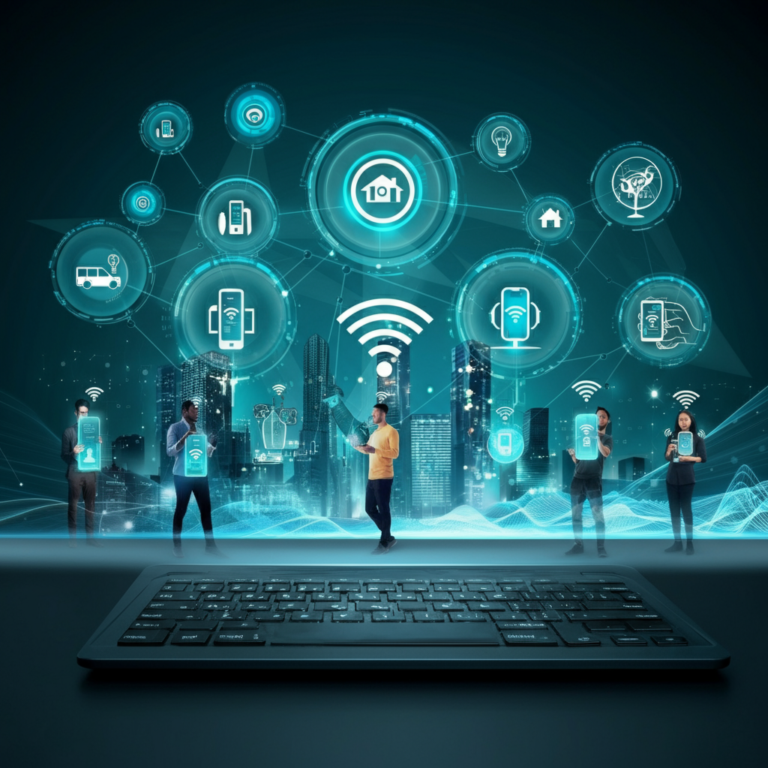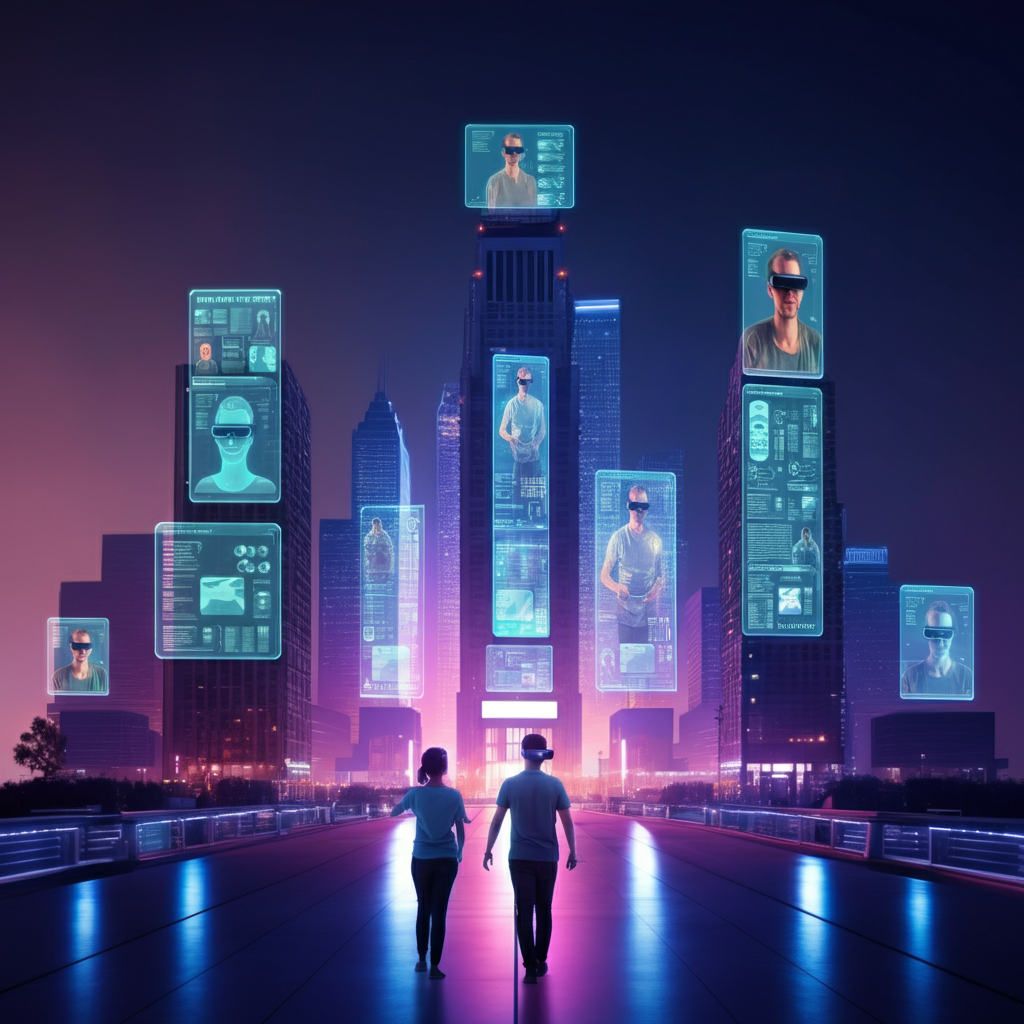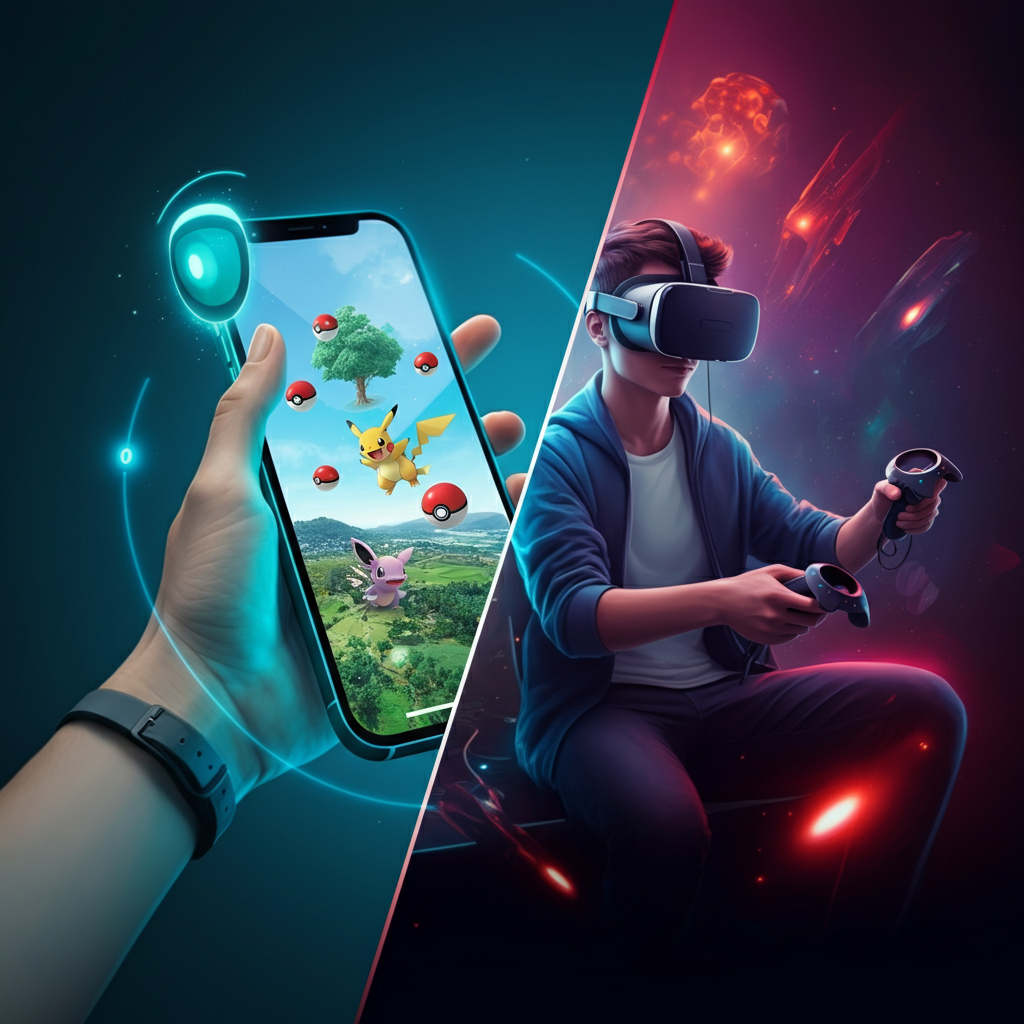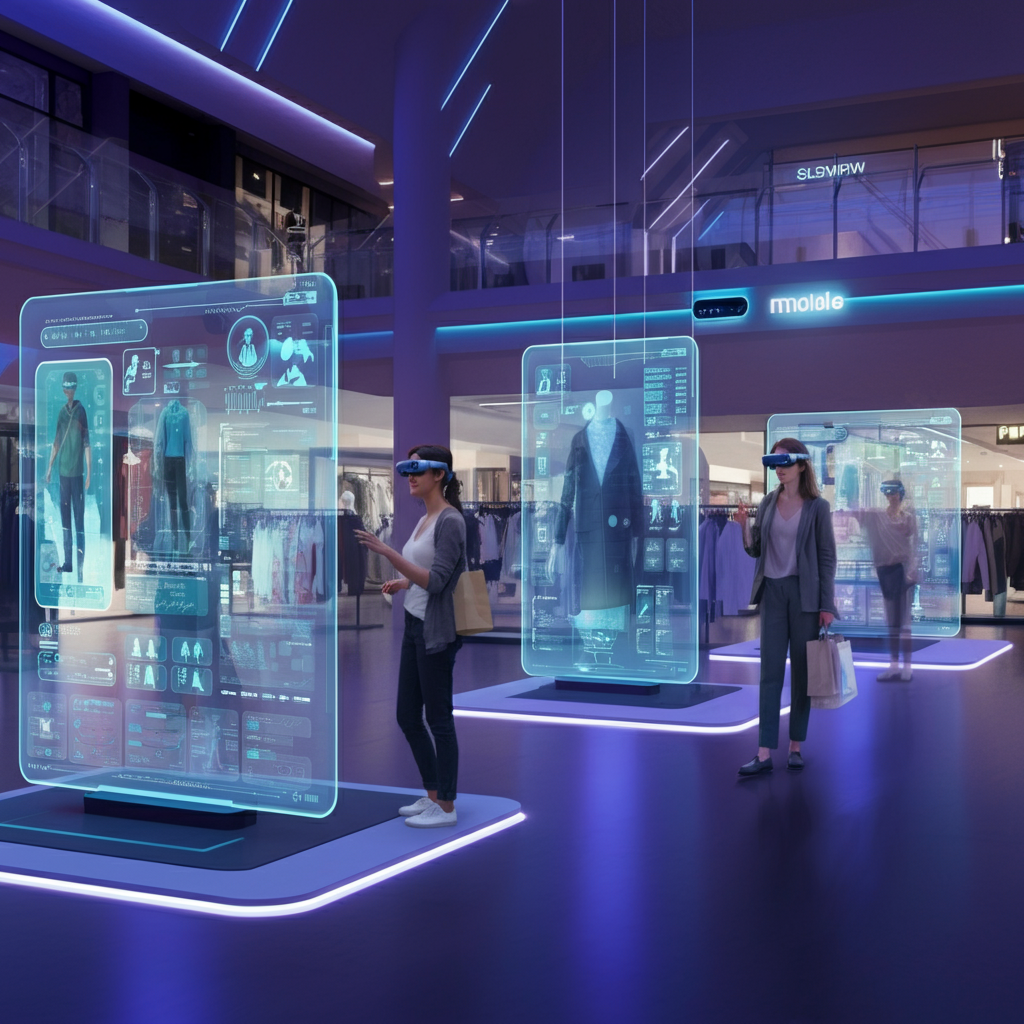Trends in Internet of Things technology: The Internet of Things (IoT) has evolved from a futuristic idea to a game-changing reality, transforming how we use technology in both our personal and professional lives and becoming a pillar of our digital age.
An unseen web of data and automation that improves our everyday lives has been created by this networked network of smart gadgets and sensors, which has become ingrained in contemporary life.
The scope of IoT goes well beyond basic smart home appliances. Sensors in manufacturing save downtime and maximise productivity by anticipating equipment faults before they happen.
Wearable technology in healthcare allows for proactive medical treatments by continuously monitoring patients’ vital signs. IoT networks are used in smart cities to control traffic, save energy costs, and enhance public services.
With IoT sensors tracking soil conditions and automating irrigation systems, even agriculture has changed.
But what precisely drives this technological revolution? At its heart, IoT comprises a large network of internet-connected devices that gather, transmit, and analyse data.
These gadgets, which vary from basic temperature sensors to complex industrial machinery, all cooperate to build more intelligent and effective systems.
As we stand on the threshold of even greater technological growth, IoT continues to expand, promising advancements in artificial intelligence integration, edge computing, and 5G connection.
These innovations will significantly increase IoT’s capabilities, creating new opportunities for automation, efficiency, and enhanced quality of life across all sectors of society.
Understanding IoT: What is It?
Connecting a wide range of physical objects to the Internet, the Internet of Things (IoT) is a revolutionary idea that allows them to gather, send, and exchange data on their own.
Commonplace items like automobiles, wearable technology, and home appliances are all part of this network, which is interconnected. These items are equipped with sensors and software that allow data exchange and communication over multiple networks, including Bluetooth and Wi-Fi.
Sensors/devices, connectivity, data processing, and a user interface are the essential elements of an Internet of Things system. Sensors collect environmental data, and networking features let these gadgets talk to other gadgets or cloud services.
After being gathered, the data is processed, frequently without the need for human participation, to extract insights or initiate actions.
By improving operational efficiency and enabling real-time monitoring67, IoT applications are transforming a wide range of industries, including healthcare, manufacturing, and smart cities. IoT technology is predicted to have a substantial impact on our daily lives and company operations as it develops further, opening the door to smarter homes and more effective industrial processes.
How IoT Works
Devices may gather, send, and analyse data thanks to the Internet of Things (IoT) smooth integration of multiple components. Fundamentally, the Internet of Things starts with sensors or gadgets that collect data from their environment.
A wearable fitness tracker, for example, tracks physical activity levels and heart rate. These intelligent gadgets have embedded systems that enable internet-based communication.
Following collection, data is sent via many connectivity options, including 5G networks, Bluetooth, and Wi-Fi. An IoT gateway, which acts as a central hub for data flow, is frequently the conduit for this transfer. To save bandwidth and improve reaction times, the data can be locally examined at the edge or transferred to a cloud platform for additional processing.
Data processing is an essential next step after transmission. The data is examined to derive useful insights or initiate automated reactions. For instance, a smartphone app that offers performance feedback may receive health data from a fitness tracker. To find patterns and reach well-informed conclusions, this processing might make use of cutting-edge technology like artificial intelligence and machine learning.
Lastly, users may efficiently manage and control their devices by interacting with IoT systems via a graphical user interface (UI), like a web portal or mobile app. From smart homes to industrial automation, this network of networked devices not only improves user experience but also boosts productivity in a variety of applications.
Real-World Examples of IoT Applications
- Smart Home Devices like Amazon Echo and Google Nest automate and enhance home living.
- Wearable Tech such as Fitbit health trackers monitor physical activity and health metrics.
- Industrial IoT Solutions predict machine maintenance needs in factories, avoiding downtime.
Key components of trends in Internet of Things technology

It is crucial to look at the main elements of Internet of Things (IoT) systems to comprehend how they operate. These elements combine to form a linked ecosystem. Trends in Internet of Things technology are rapidly evolving, focusing on advancements in artificial intelligence, edge computing, enhanced security measures, and increased integration across various industries to improve efficiency and user experience.
1. Actuators and SensorsActuators and Sensors
Sensors and actuators, sometimes known as the “eyes and ears” of the system, are at the core of the Internet of Things.
Sensors gather information by identifying environmental changes like motion, temperature, and humidity. A smart thermostat, for instance, uses temperature sensors to keep an eye on the conditions inside the house. Conversely, actuators are in charge of carrying out commands in response to the data they receive.
They can do things like adjusting a thermostat according to occupancy or turning on lights when a motion sensor is triggered.
2. Interaction
Strong connectivity options are essential for efficient data sharing and communication between IoT devices. These can encompass a range of technologies, including Low Power Wide Area Networks (LPWAN), Bluetooth, 5G, and Wi-Fi.
Each alternative serves distinct demands; for instance, Wi-Fi delivers high-speed data transfer over short distances, while LPWAN is perfect for long-range communication with lower power requirements.
3. Cloud computing and data processing
Data must be processed after collection to yield insightful information. Cloud computing and edge computing are useful in this situation. Cloud platforms allow for real-time management and decision-making by storing and analysing enormous volumes of data. By processing data locally near the source, edge computing lowers latency and bandwidth consumption.
4. Interfaces for Users
Finally, user interfaces are crucial for engagement with IoT systems. Intuitive interfaces such as smartphone applications or web dashboards allow users to monitor and operate their devices effortlessly.
These interfaces give visual representations of data and enable users to make informed decisions based on real-time information.
These elements work together to create a seamless IoT environment that improves functionality for a range of applications, including industrial automation and smart homes. Leveraging the full potential of IoT technology in our daily lives and enterprises requires an understanding of these components.
Impact of IoT in Different Sectors
Across many industries, the Internet of Things (IoT) has become a disruptive force that is opening up new possibilities and efficiencies.
1. Consumer electronics and smart homes
IoT has transformed home automation in residential settings. Convenience, energy efficiency, and security are improved by gadgets like voice assistants (like Amazon Alexa), security cameras, and smart thermostats (like Nest). Homeowners can save money and improve comfort by controlling their surroundings remotely, getting warnings on odd activity, and optimizing energy use.
2. Medical Care
IoT advancements are greatly enhancing patient care in the healthcare industry. Continuous health tracking is made possible by wearable technology, such as the Apple Watch, which continuously monitors vital indicators.
By managing chronic conditions without the need for frequent hospital visits, remote patient monitoring systems help healthcare providers save time and money while improving patient outcomes.
3. Manufacturing & Industry (IIoT)
The Industrial Internet of Things (IIoT) is revolutionizing production by allowing predictive maintenance solutions that monitor equipment performance. By warning operators of possible problems before they become more serious, these systems minimize downtime and lower operating expenses.
IoT-powered automation also improves production line efficiency by lowering human error.
4. Transportation & Smart Cities
Smart traffic management systems that lower traffic and increase road safety are one way the IoT is changing urban landscapes. IoT-enabled infrastructure, such as streetlights and security cameras, improves resource management and urban safety, while connected cars use real-time data for automated driving.
5. Retail & Supply Chain
Smart shelves that automatically monitor inventory levels are one example of how IoT simplifies operations in retail. Supply chain systems use GPS tracking and sensors to streamline logistics, giving real-time cargo visibility and boosting productivity.
These achievements highlight how IoT is not just boosting operational economies but also offering new opportunities across varied industries.
Benefits of IoT
What makes IoT worth the investment? The benefits are significant:
- Improved Efficiency and Automation: Automating repetitive tasks saves time and reduces human error.
- Enhanced Convenience and Personalisation: IoT devices learn user preferences and adjust settings accordingly, delivering tailored experiences.
- Cost Savings and Productivity Gains: By optimising resource utilisation and preventing downtime, organisations save money and boost productivity.
- Data-Driven Decision-Making: IoT collects valuable insights, enabling informed choices and strategic planning.
Managing the Complicated Environment: Major Obstacles in IoT Integration
Despite the transformative potential of the Internet of Things (IoT), individuals and organizations must carefully consider and strategically plan for the numerous obstacles they face. Comprehending these obstacles is essential for the effective adoption and deployment of IoT.
Privacy and Cybersecurity Issues
The networked nature of IoT devices presents an increased attack surface for cybercriminals. Because every connected device could be a point of entry for bad actors, thorough security measures are crucial. Threats that organizations face include everything from device hijacking to data leaks.
Because IoT devices gather enormous volumes of operational and personal data, privacy concerns are equally urgent. Strong governance frameworks and transparency measures are necessary to address concerns regarding data ownership, consent, and appropriate usage.
Financial Implications and Implementation Costs
Adoption of IoT comes with a cost that goes beyond the initial purchase of devices. Businesses need to make investments in network capabilities, qualified staff, and infrastructure upgrades.
Maintenance, upgrades, security precautions, and perhaps consultancy fees are examples of ongoing expenses. For small and medium-sized enterprises, these expenses can constitute a considerable barrier to entry, potentially generating a technological divide in several industries.
Complexities of Data Management
IoT networks generate enormous volumes of data, bringing both potential and challenges. Effectively storing, processing, and evaluating this data is a challenging undertaking for organizations. Managing volume isn’t the only difficulty; real-time useful insight extraction while preserving data relevance and quality is also a concern. Advanced analytics and data management technologies are needed for this.
Standards for Technical Interoperability
The diversity of the IoT ecosystem poses serious interoperability issues. Integration problems might arise from disparate manufacturers, protocols, and communication standards. System integration and device communication are made more difficult by the absence of universal standards. Businesses frequently need custom solutions or middleware to support smooth operations as they navigate a complex web of conflicting standards and proprietary technology.
Addressing these issues through thorough planning, strong security protocols, and calculated investments in infrastructure and knowledge are necessary for the successful deployment of IoT. To develop long-lasting and successful IoT solutions, organizations must weigh the possible advantages against these challenges.
Future of IoT: What’s Next?
The IoT landscape is set to undergo extraordinary development and innovation in the coming years.
Trends in Growth
IoT adoption is anticipated to grow quickly with the introduction of 5G networks, allowing for faster connections and reduced latency. Additionally, edge computing will be essential to improving real-time data processing.
Possible New Developments
IoT and AI integration is expected to yield ground-breaking potential. Imagine factories that optimize production lines on their own or refrigerators that automatically order groceries based on consumption patterns.
Forecasts for the Upcoming Decade
By 2025, experts estimate that there will be over 75 billion IoT-connected devices in use, revolutionizing industries and raising standards of living everywhere.
Advancing IoT
The Internet of Things is a current reality that is changing industries and lifestyles on a daily basis, rather than being a sci-fi idea. IoT is enabling new levels of productivity, convenience, and creativity by automating repetitive tasks and transforming industrial processes.
IoT adoption must be done responsibly, though, with an emphasis on sustainability, privacy, and cybersecurity for both individuals and enterprises.
Are you prepared to investigate the Internet of Things?
Keep yourself updated, try out smart gadgets, and think about how this technology can improve your life or business.
The Internet of Things (IoT) has transformed our lives and work by connecting our digital and physical worlds. IoT is rapidly shaping the future by improving everyday life and industry efficiency and innovation.
Conclusion
In conclusion, the Internet of Things has already made a significant impact on our lives and businesses and will continue to do so in the future. Its ability to connect devices and collect real-time data has led to improved efficiency and convenience in daily tasks while also driving innovation and growth across industries.
While IoT offers many benefits and exciting possibilities, it also comes with its own set of challenges and concerns. Businesses and individuals must approach IoT implementation responsibly, keeping cybersecurity, privacy, and sustainability in mind.
As we move forward into the future, it is clear that IoT will play a major role in shaping our world and driving further advancements. Stay informed, be open to exploring new technology, and embrace the potential of IoT to enhance your life or business. The possibilities are endless.





